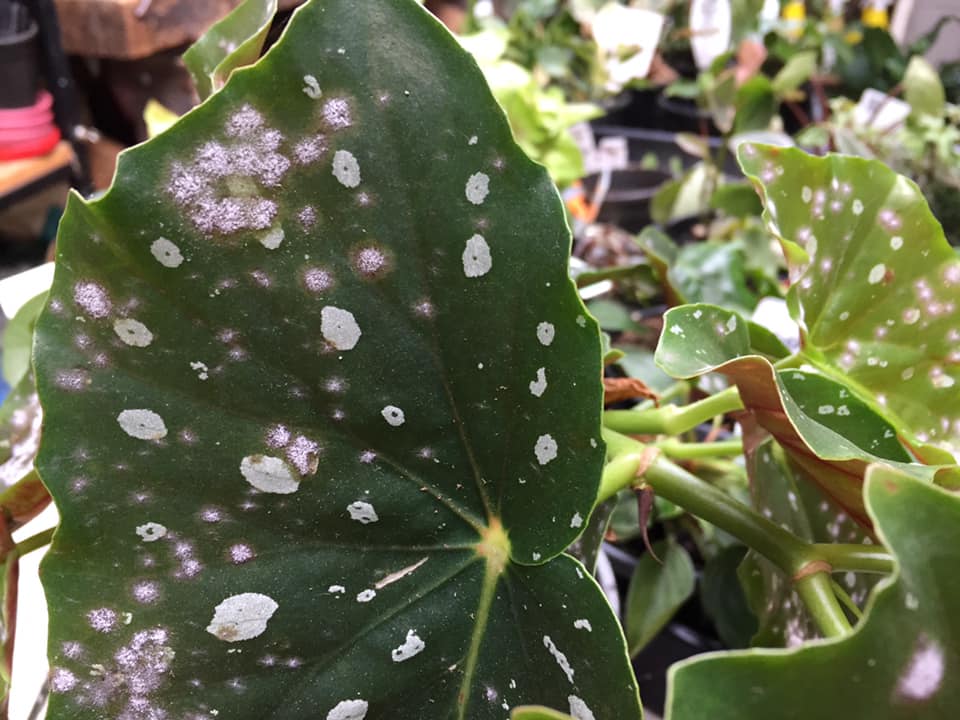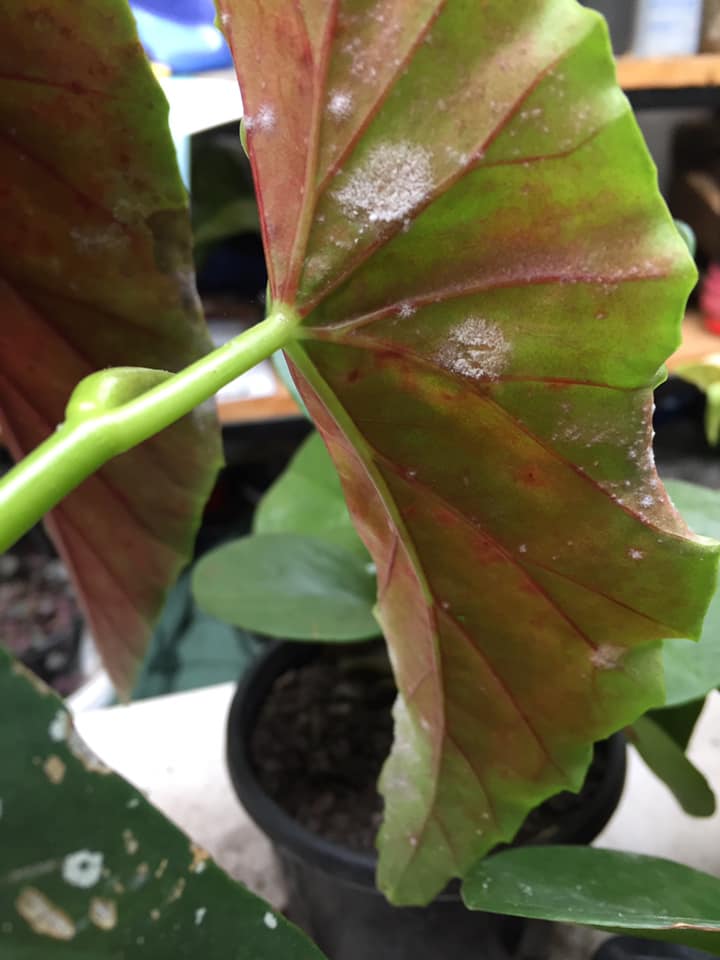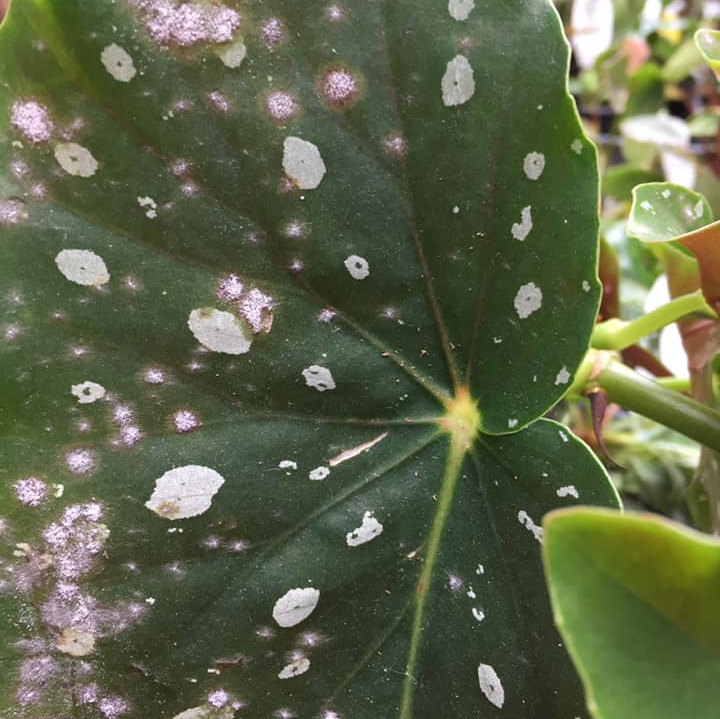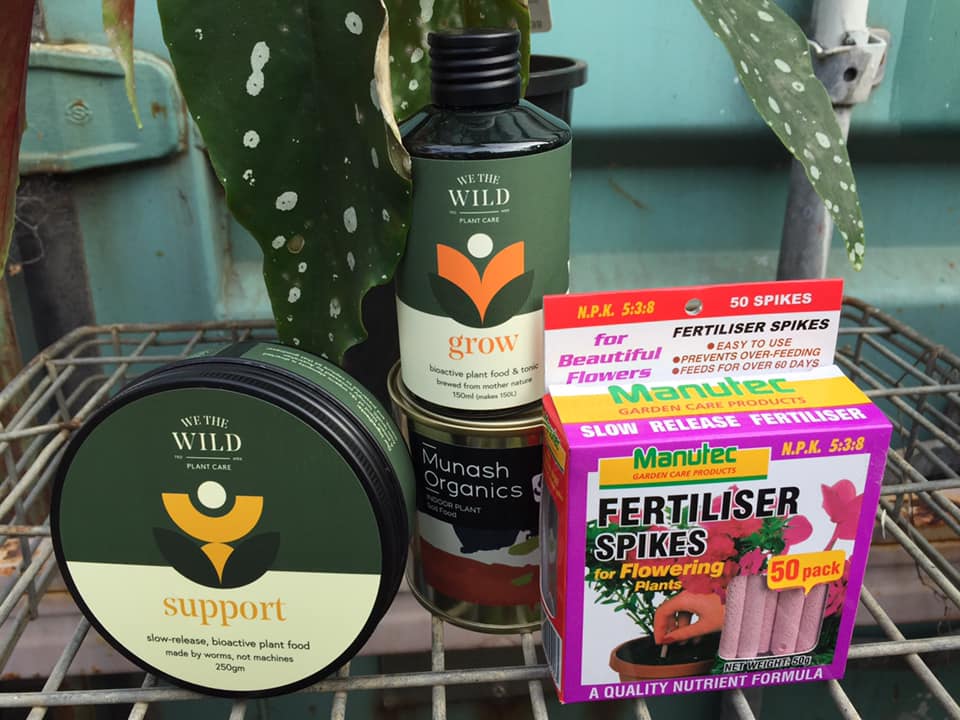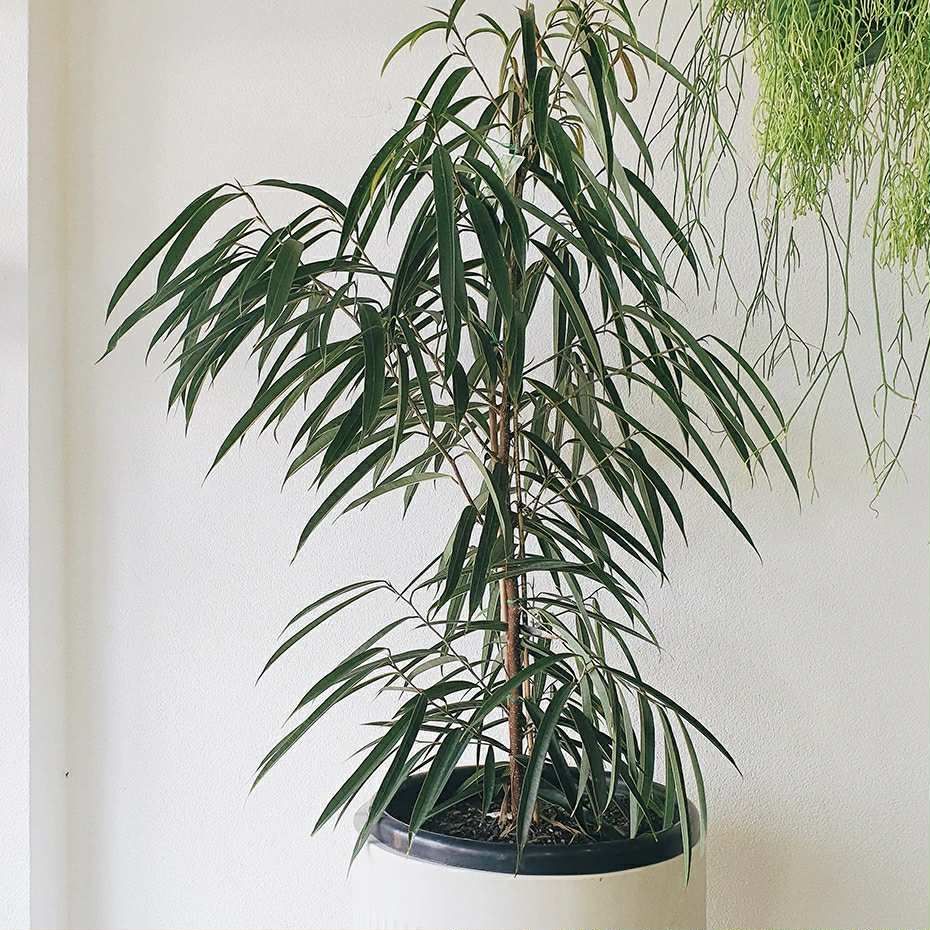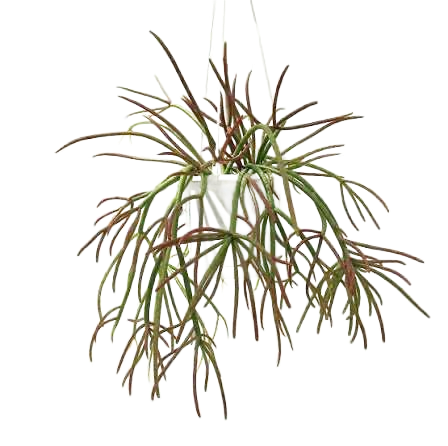Begonia winter check up
How is Dotty and your other begonias going Gippsland?
Thought we would start the week with a begonia check up. Many of us fell in love with Dotty over the warmer months and for some it was the first begonia you have taken home. In mid climates these begonias will thrive all year round, in cold coastal Gippsland I know some of you are experiencing some challenges with leaf loss and powdery mildew.
Begonias are susceptible to fungal problems which is why when you purchased one from Greener Life that was to live in Gippsland we would have explained that you don’t mist spray the leaves of begonias, they don’t like to live in bathrooms as the humidity can encourage mildew growth in cooler weather and its best to water as they dry out a little, keeping them on the dryer side in winter.
- Snip off as many of the affected leaves as you are happy to do so (bin or burn them, although the pathogen only survives on living tissue culture composting these leaves is not recommended)
- Place the plant into direct winter sun if possible- note sun up to about 22 degrees is fine for the plant in your attempt to kill off the mildew. Direct sun can kill the pathogens but remember to get it out of direct sun if it becomes too hot. Note direct sun or overly bright light can also fade the dots but this will improve once the plant is healthy again.
- Ensure the plant is not touching any other plants. Often the begonia mildew strain is unique only to begonias and does not spread to other plant species but it is best to separate them just in case. Ensure all other begonias are socially distanced from each other. If the plant is badly infected or you want to take further action we sell a couple of easy to apply fungal control products that will help. Bring a photo of the affected area in to us or bag up and bring in some affected leaves and we will ensure you purchase the correct product.
- Dose your begonias up on seaweed products to increase their disease resilience and feed the plant consistently all year with a low nitrogen based plant or soil food (we recommend the pink fertiliser sticks and our worm based organic plant foods). The objective with feeding your begonia these lower nitrogen based products is to encourage stronger, healthier stem and tissue structure and encourage mass flowerings.
- Be prepared to prune the begonia late winter, early spring to really encourage new season strong growth, a healthy plant will produce those amazing long dotty leaves much faster than a sad, straggly underfed one.
- NOTE : Always water the soil of your begonia and keep water away from the leaves.


